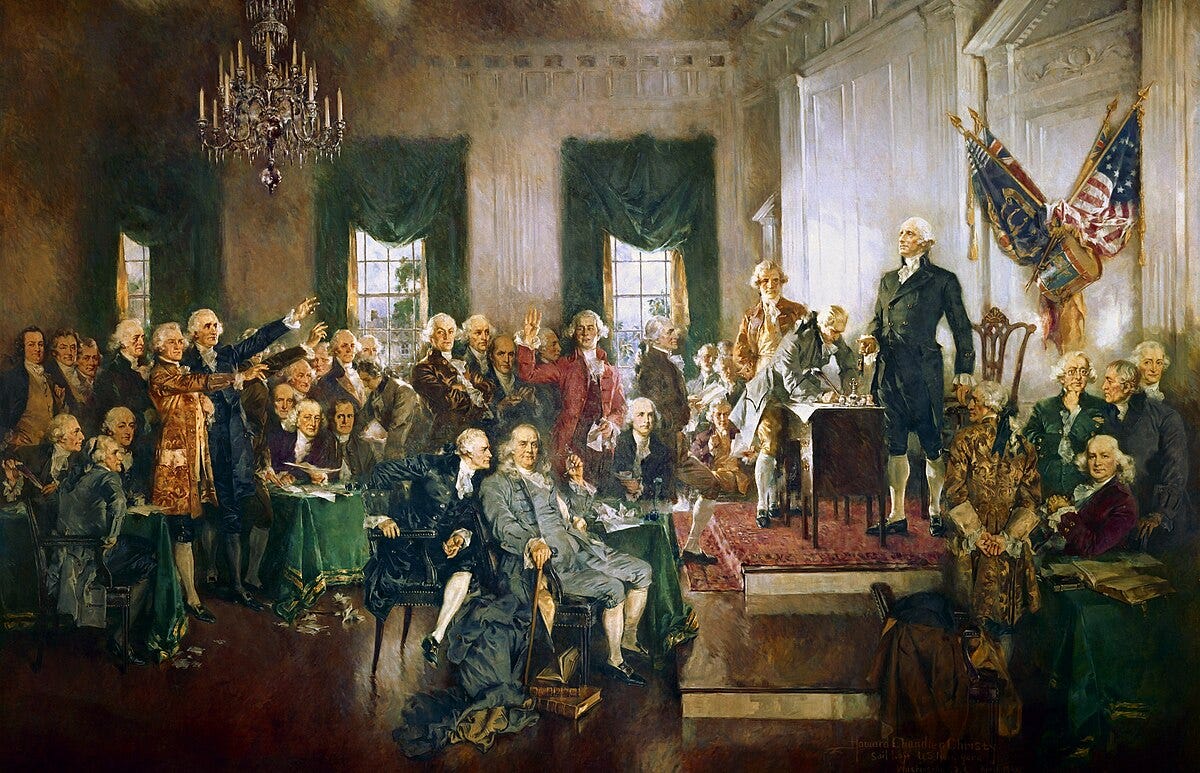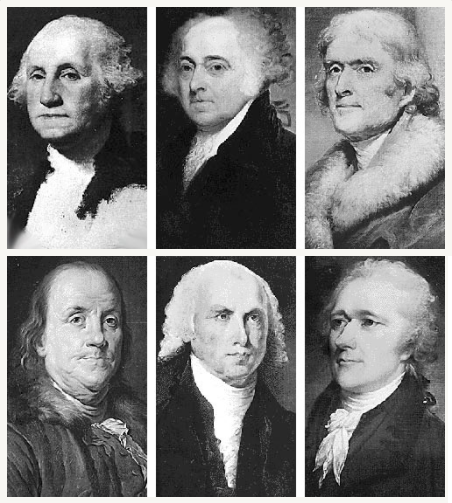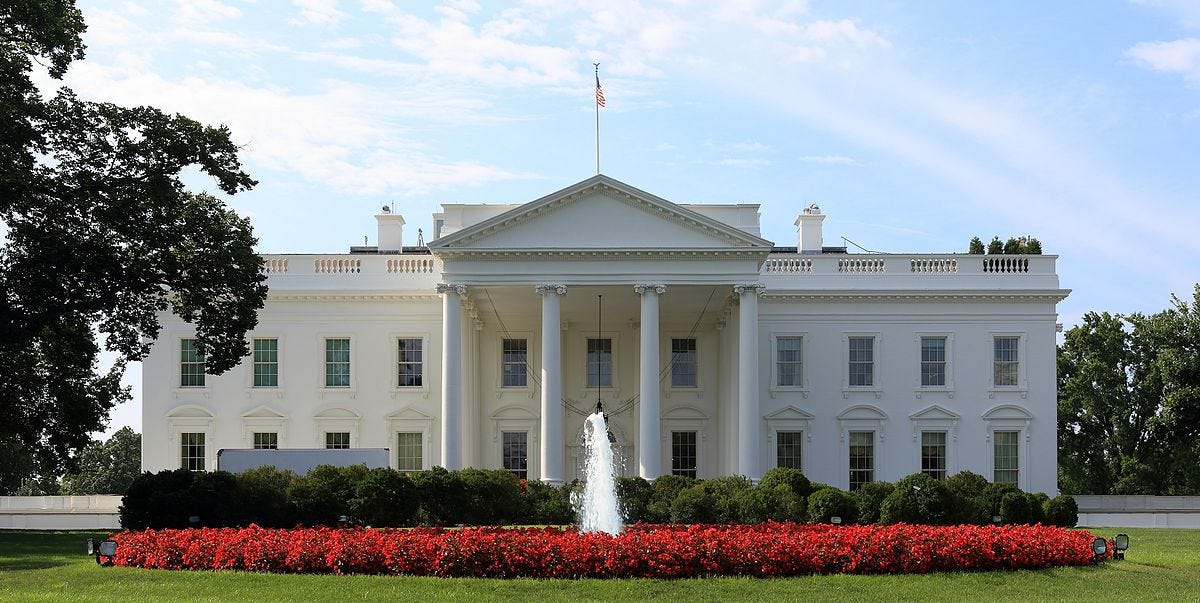Built to Last: What the Founders Hoped the U.S. Government Would Become
In 1776, the American colonies broke away from Great Britain. They no longer wanted to be ruled by a king.
In 1776, the American colonies broke away from Great Britain. They no longer wanted to be ruled by a king. But once the fighting ended, the United States faced a big question: What kind of government should we have now?
This was something no one had ever done before. The Founders, men we've covered before like George Washington, James Madison, Alexander Hamilton, and others, had a tough job. They wanted to create a government that was fair, strong, and lasting. But they also wanted to make sure it didn’t become too powerful or unfair, like the British monarchy (a system ruled by kings and queens).
So, they had to answer this: How do we protect people’s freedoms while keeping the country safe and organized?

The Founders had lived through the struggles of war, unfair taxes, and being ruled from across the ocean. These experiences shaped their ideas. Let’s look at some of the key things they wanted in the new U.S. government, and why they mattered at the time.
One of the biggest ideas the Founders believed in was popular sovereignty (government power comes from the people). Under British rule, the colonists had no say in the laws they had to follow. That felt unfair.
The Founders wanted something different. They believed that power should come from the people and that leaders should be elected (chosen by voting). This is called a republic: a system where people vote for others to make decisions on their behalf.
They also believed in regular elections. If a leader didn’t do a good job, the people could vote them out.
The Founders didn’t want any one person or group to get too powerful. That’s why they created three branches of government, which we covered in detail here:
This system is called separation of powers: each branch has its own job, and no branch can take over the others. They also created something called checks and balances. This means each branch can stop the others from doing something unfair or unconstitutional (against the law of the Constitution).
At the time, this was a new idea. It showed the Founders were serious about keeping the government from turning into a dictatorship (a system where one leader controls everything).

The Founders had just lived through a weak system called the Articles of Confederation. Under that system, the national government couldn’t collect taxes, enforce laws, or even handle problems between states. It was too weak to hold the country together.
The Founders knew the new government had to be strong enough to lead, but not so strong it could take away freedom.
That’s why the Constitution gave the federal government certain powers, like raising an army or printing money, but also gave many powers to the states. This is called federalism (a shared system between national and state governments). It let each level of government do what it does best. You can learn more about federalism here.
What the F(ederalism)?
Did you know there are about 6,935 elected Congressional officials in any given year? (That's Senators and Representatives, by the way). Roughly 535 officials serve within the U.S. Federal Government, while the rest hold elected office within the State Legislature
Many people were afraid the new government would have too much power over people’s lives. That’s why some states refused to approve (ratify) the Constitution unless it included a list of protected rights.
The Founders agreed, and in 1791, they added the Bill of Rights, the first 10 amendments (changes) to the Constitution.
These rights came from real problems the colonists had faced under British rule. The Founders wanted to make sure those problems didn’t happen again. (We have covered each of the Amendments already, so check out our post archive here to check them out!)
The Founders knew the world would change. They didn’t want to lock the country into rules that wouldn’t make sense in the future. So, they created a way to amend (change) the Constitution:
But they also didn’t want it to be too easy. If the rules changed too often, the government would be unstable. So, they created a careful process that requires many people to agree before making a change.
This shows the Founders were trying to balance stability (keeping things working) with flexibility (allowing change when needed).
The Founders’ ideas were built for their time, but many still guide the United States today. We still debate how much power the government should have, how to protect rights, and how to make fair changes.
Even though the world has changed a lot since 1787, the Founders’ vision helped build a government that could adapt, grow, and still serve the people.

Understanding their goals helps us understand why our system works the way it does, and what we can do to improve it!
Sources and Additional Reading
Founders Online, National Archives
“Creating the United States”, Library of Congress
“What the Founders Thought”, Constitution Center
“American Founding”, Teaching American History
“Revisiting the Founding Era”, Gilder Lehrman Institute
“Bill of Rights: What It Says and What It Means”, National Archives
“The Federal In Federalism?”, iCivics
“The Founding Era”, National Constitution Center




